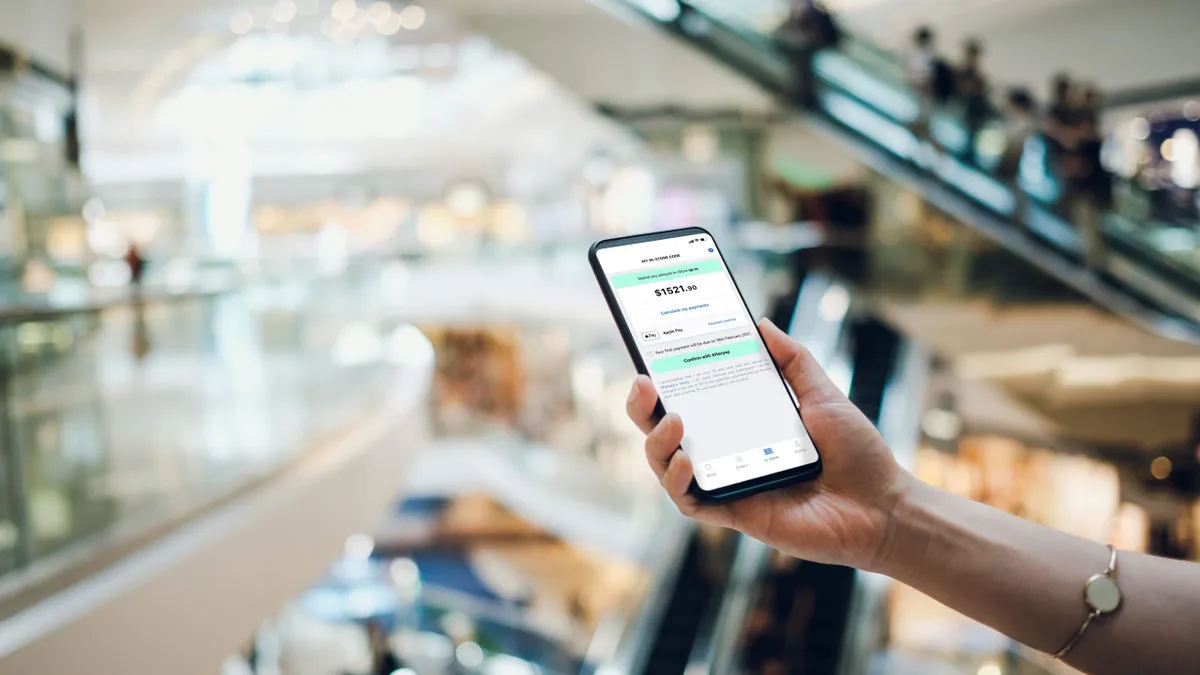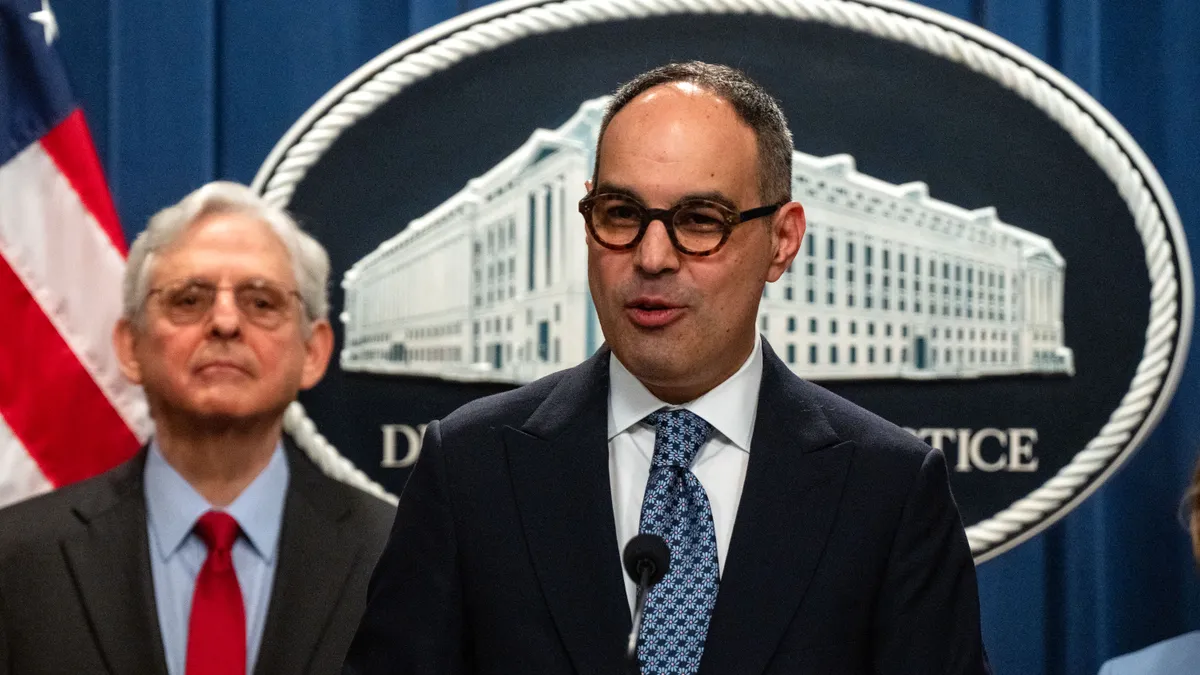Dive Brief:
- As buy now-pay later services proved popular over the Black Friday shopping weekend, the Australian BNPL purveyor Afterpay reported a 34% increase for in-store and online installment payment orders this holiday season, the payments company said in a press release last week.
- Among the top categories with U.S. shoppers this year were fashion, footwear, beauty, homeware and fitness, Afterpay said. The top-selling items purchased using its installment payments were clogs, weekender bags, trucker hats, pajamas and shoes, according to the release.
- Afterpay cited 11% more Gen Z shoppers using buy now-pay later options between Black Friday and Cyber Monday compared to last year. Overall, the platform also reported a 30% year-over-year increase in its users' spending online.
Dive Insight:
Sydney-based Afterpay was acquired by payment tools company Square in August for $29 billion, underscoring the rise of the buy now-pay later trend worldwide.
Though this year's holiday shopping season has yielded mixed results so far, consumer demand for buy now-pay later options has clearly risen. Compared to 2019, installment payment spending more than quadrupled in November, research from Adobe found.
Afterpay's uptick follows the platform's entry into in-store payments. In October 2020, Afterpay enabled shoppers to make installment payment purchases via a contactless, virtual card in their digital wallet.
"As we celebrate another holiday season in the pandemic, consumers were eager to gain a sense of normalcy and spend on gifts for themselves and loved ones," Zahir Khoja, Afterpay's general manager of North America, said in the statement.
Amid this period of growth, other payments providers and retailers are also looking to offer the service to customers. Retailer Target introduced services from BNPL players Affirm and Sezzle in October, and Mastercard recently announced that it would launch a buy now-pay later option sometime next year.
Yet, some question whether the advantages of installment payments are worth the risk to consumers and providers.
Fitch Ratings released a report this year indicating that consumers attracted to buy now-pay later services may not repay the balance if they face financial hardships. And because BNPL providers don't always report their customers to credit bureaus, they may not accurately assess borrowers' debt levels.
In November, the House Financial Services Committee's Task Force on Financial Technology held a hearing during which Marisabel Torres, director of California policy at the Center for Responsible Lending, testified regarding the potential risk of buy now-pay later services damaging young people's credit and overloading them with debt.











